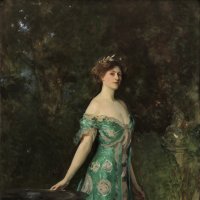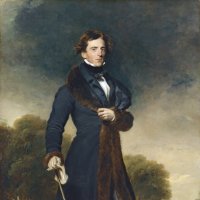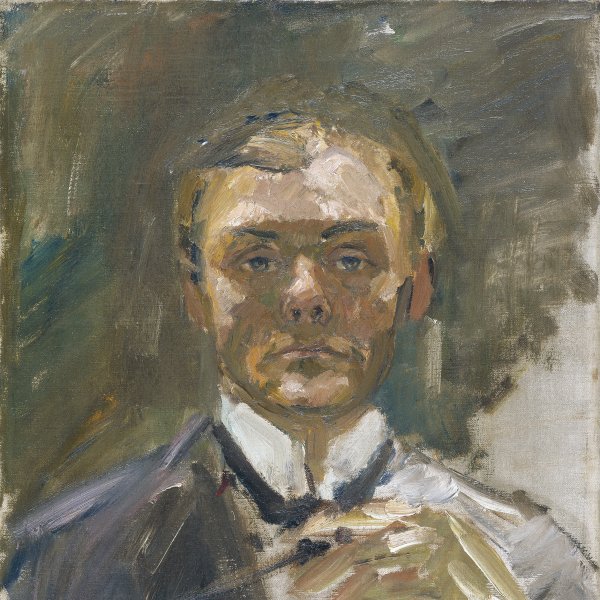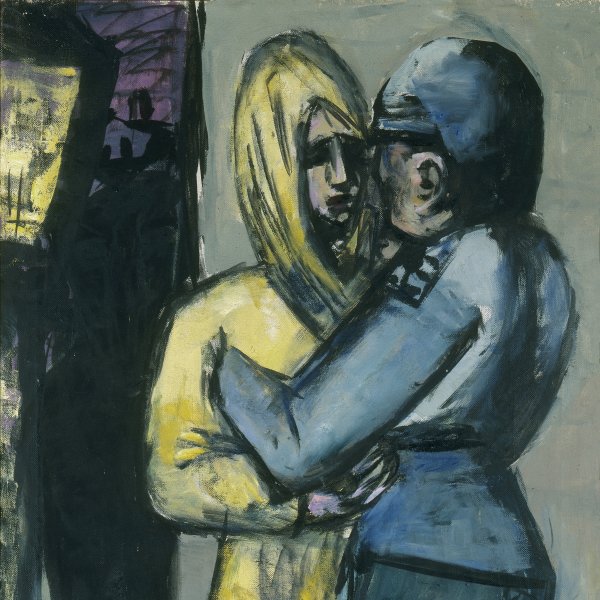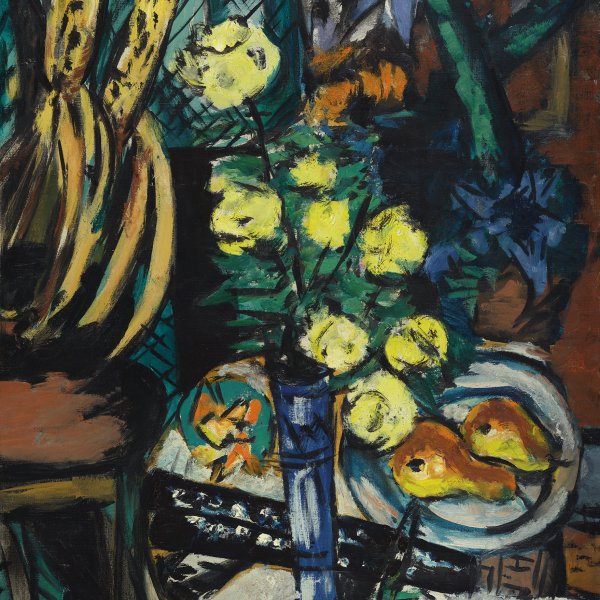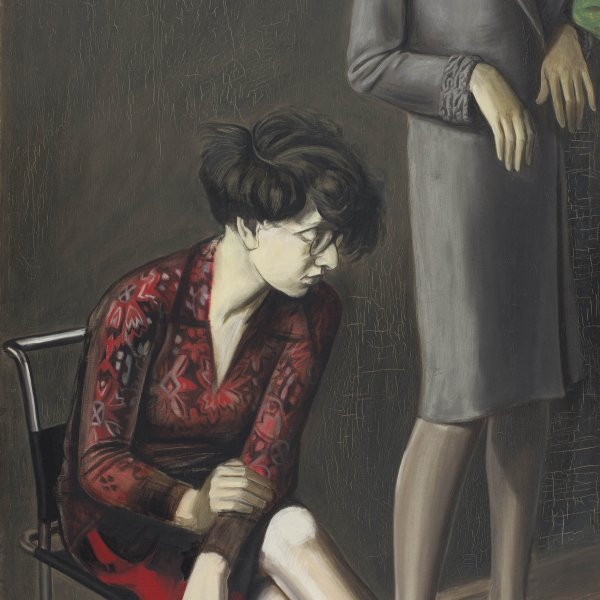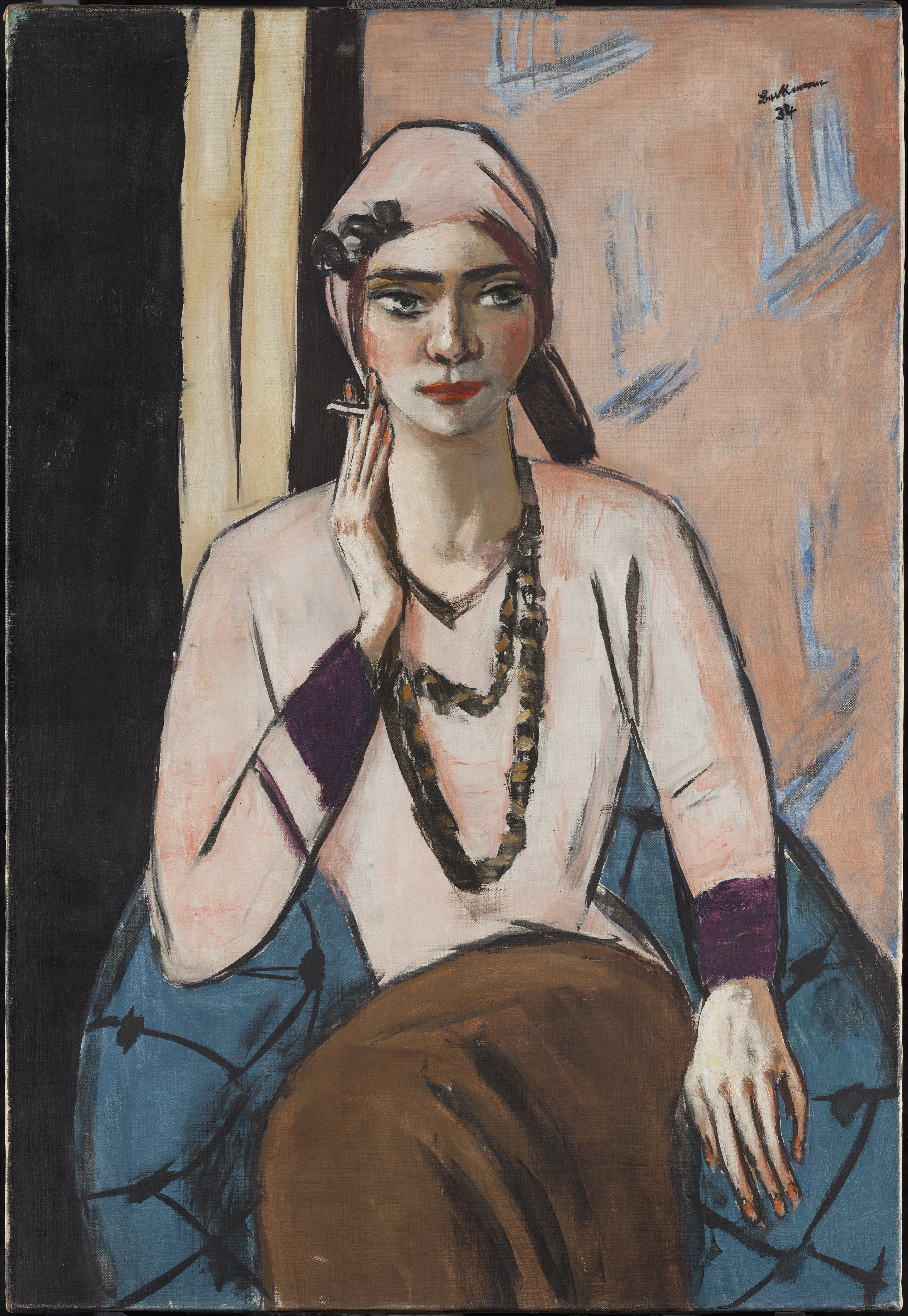Quappi in Pink Jumper
Beckmann’s incisive personal style softened perceptibly from the mid-1920s, when he met and married his second wife, Matilde von Kaulbach, better known as Quappi. The thick black outlines, earlier used to convey his bitter condemnation of contemporary society, thenceforth served to define the facial features of his attractive young wife. Beckmann’s swift brushstrokes turn Quappi—portrayed here on a blue armchair, fashionably dressed and holding a cigarette—into a prototype of the modern woman; resolute and self-confident. The portrait was started in 1932 and finished in 1934, by which time Beckmann had changed the date and also toned down Quappi’s smile to reflect the couple’s concern at the rise of the Nazis to power.
Max Beckmann was an isolated case in the German art scene of his day. He did not belong to any of the successive Expressionist movements and, although he had certain affinities with the New Objectivity, its rigid, cold formulas never entirely convinced him. Beckmann preferred to portray the world as a tragedy for man and his language became tinged with a very bitter tone.
Quappi in Pink Jumper is one of the many portraits of the artist’s wife, Mathilde von Kaulbach (1904–1986), whose pet name was Quappi. Daughter of the German painter Friedrich August von Kaulbach, in 1925 she became Max Beckmann’s second wife and his faithful lifelong companion. The artist painted her on many occasions, portraying her as the epitome of the new type of assertive, modern and self-confident woman often found in his contemporaries’ works. According to the catalogue raisonné of the artist’s work, the portrait in the Museo Thyssen-Bornemisza was executed in two stages. The portrait was practically finished at the first sitting in Frankfurt in 1932; but two years later, while the couple were in Berlin, the painter made a few modifications and, as can be seen at first glance, changed the date next to his signature. It is known from the testimony of Stephan Lackner, the first owner of the portrait and a good friend of Beckmann’s, that in the first version Quappi wore more of a smile. It is no coincidence that during the time that had elapsed between the two sessions the Beckmanns’ life had undergone a major change. The Nazis had forced the painter to step down from his post as a lecturer at the Frankfurt academy and the couple lived in hiding in Berlin, endeavouring to go unnoticed.
Quappi is portrayed frontally, seated in a blue armchair with crossed legs. The young woman poses elegantly in a highly sensuous posture, with a cigarette in her fingers and a vague air of superiority that is so modern that led the painting to be erroneously titled The American Woman on occasions. Quappi herself recounted that most of her portraits had been designed to show off a particular piece of clothing: Quappi in Blue on a Boat (1926–50), Quappi with White Fur (1937), Quappi in Blue and Grey (1944) and Quappi in a Green Blouse (1946). According to the artist, this obsession with his wife’s clothing stemmed from his concern with “capturing the magic of reality and transforming it into painting.”Here she is dressed in a striking pink V-necked jumper and matching hat which she had just bought herself in Frankfurt.
Beckmann’s painting from that period displays a certain amount of French influence stemming from his constant trips to Paris. The flat, schematic decoration of the background and the manner in which it blends in with the image of Quappi recall Matisse’s painting. The portrait is painted using a rapid technique, as if the artist wished to capture a moment of inspiration. Beckmann is more interested in outlining the composition than in rendering painstaking details. He sketches it in his characteristic thick black contours and then applies the various colour layers. Black plays an important role in Beckmann’s compositions. It not only delimits the contours but is also used to colour large areas, such as the vertical strip on the left of the picture, which heightens the verticality of the figure and its deep black plunges the viewer’s gaze into ambiguous unknown depths.
Paloma Alarcó
Emotions through art
This artwork is part of a study we conducted to analyze people's emotional responses when observing 125 pieces from the museum.

